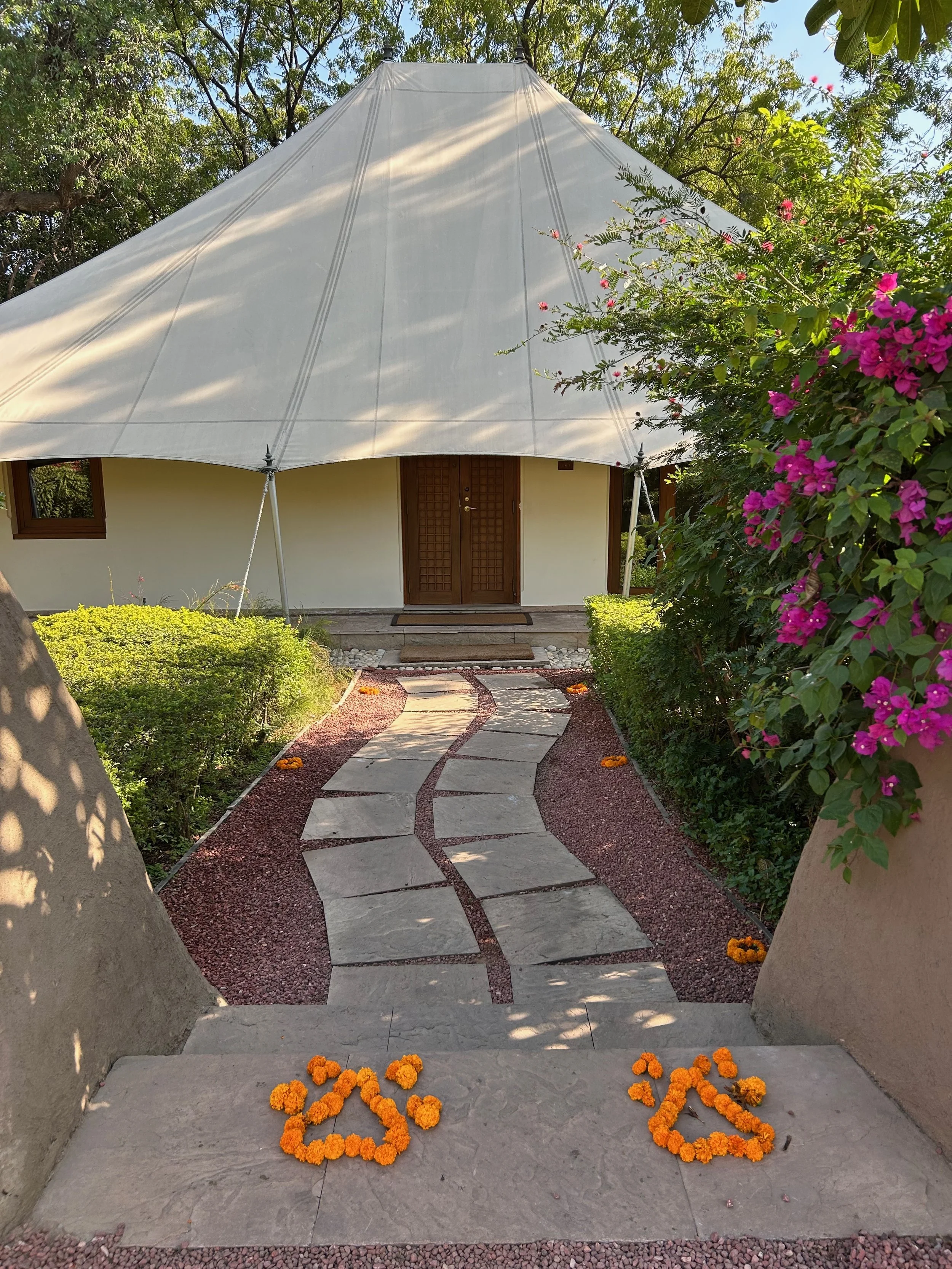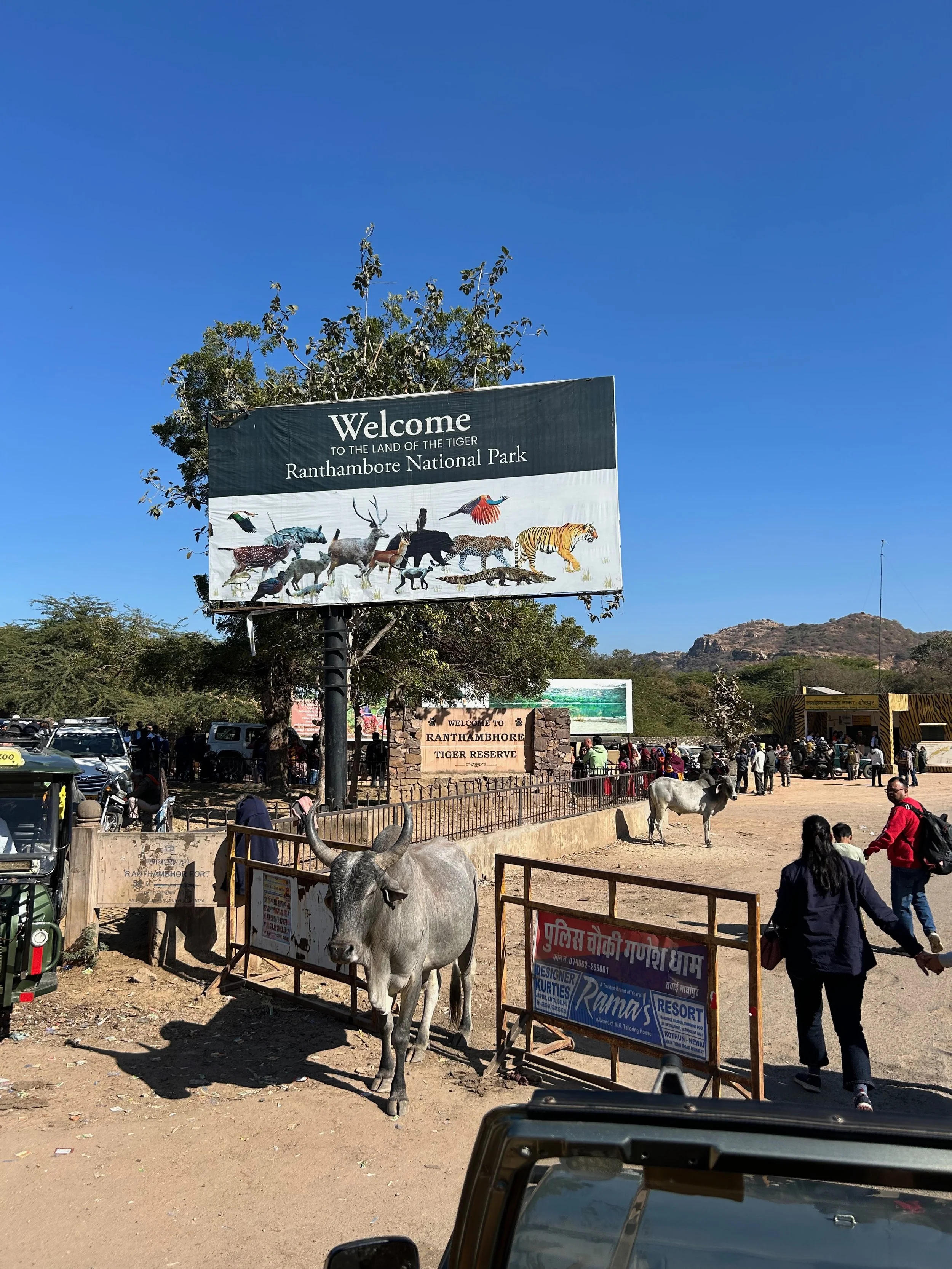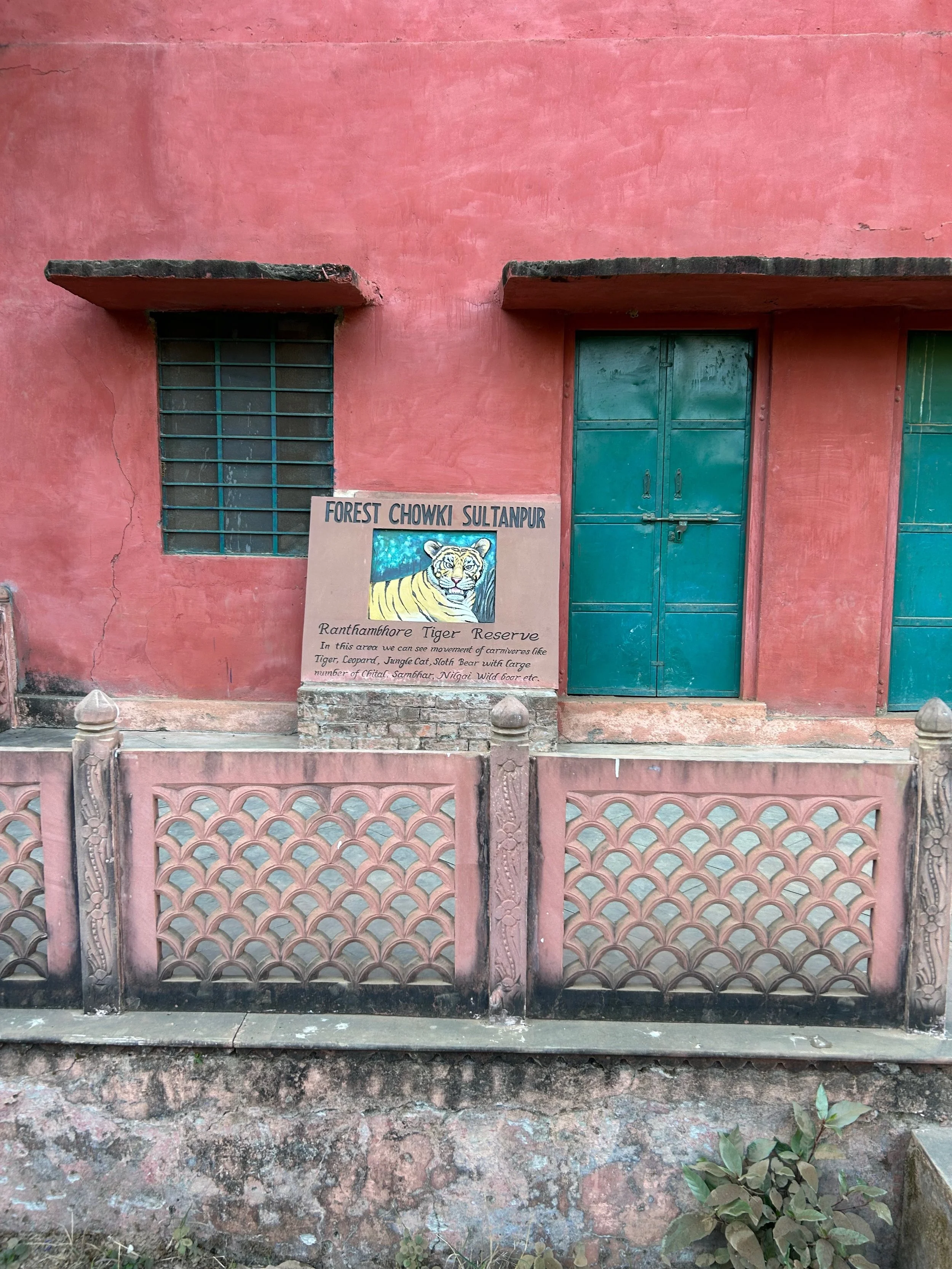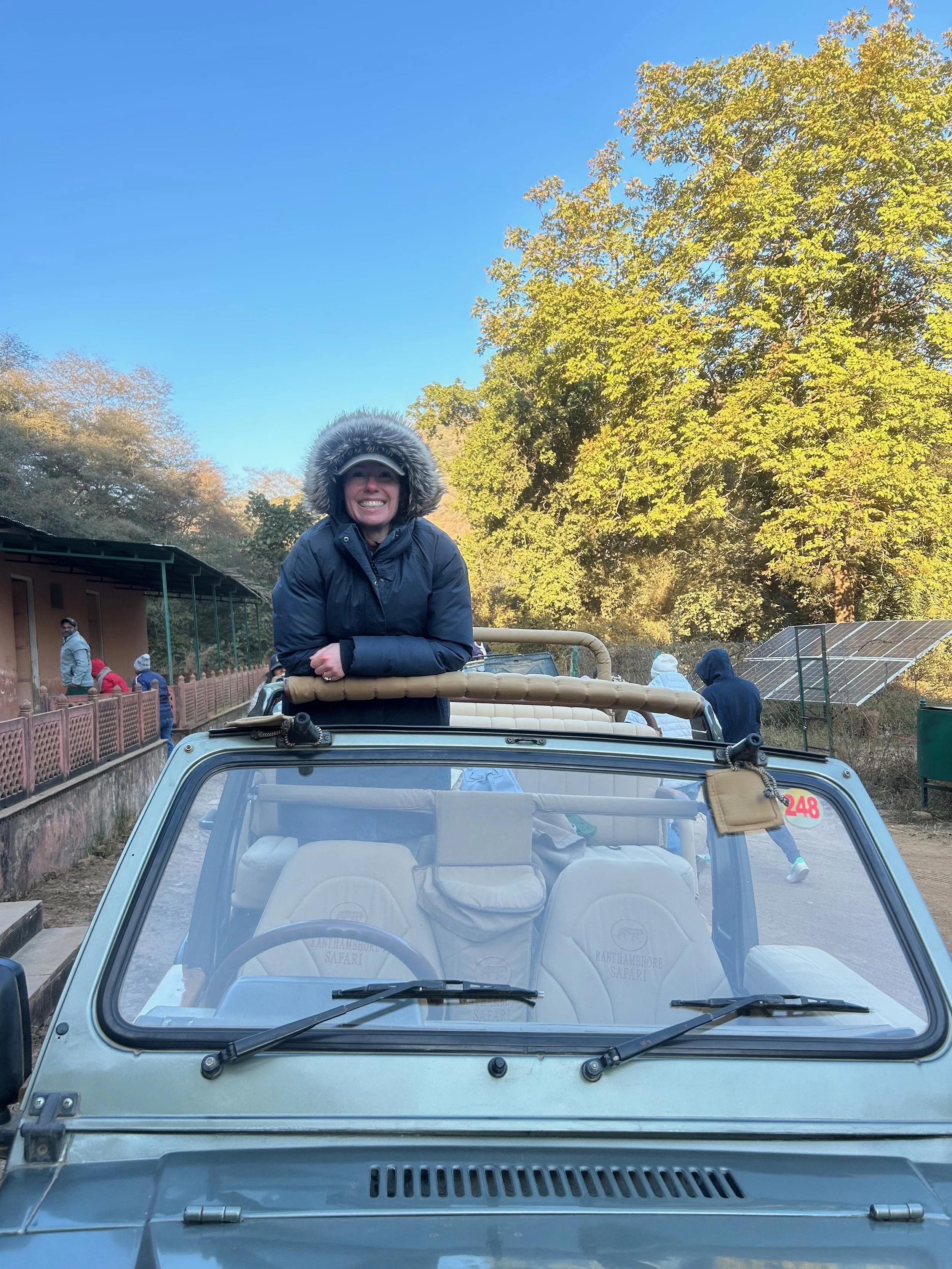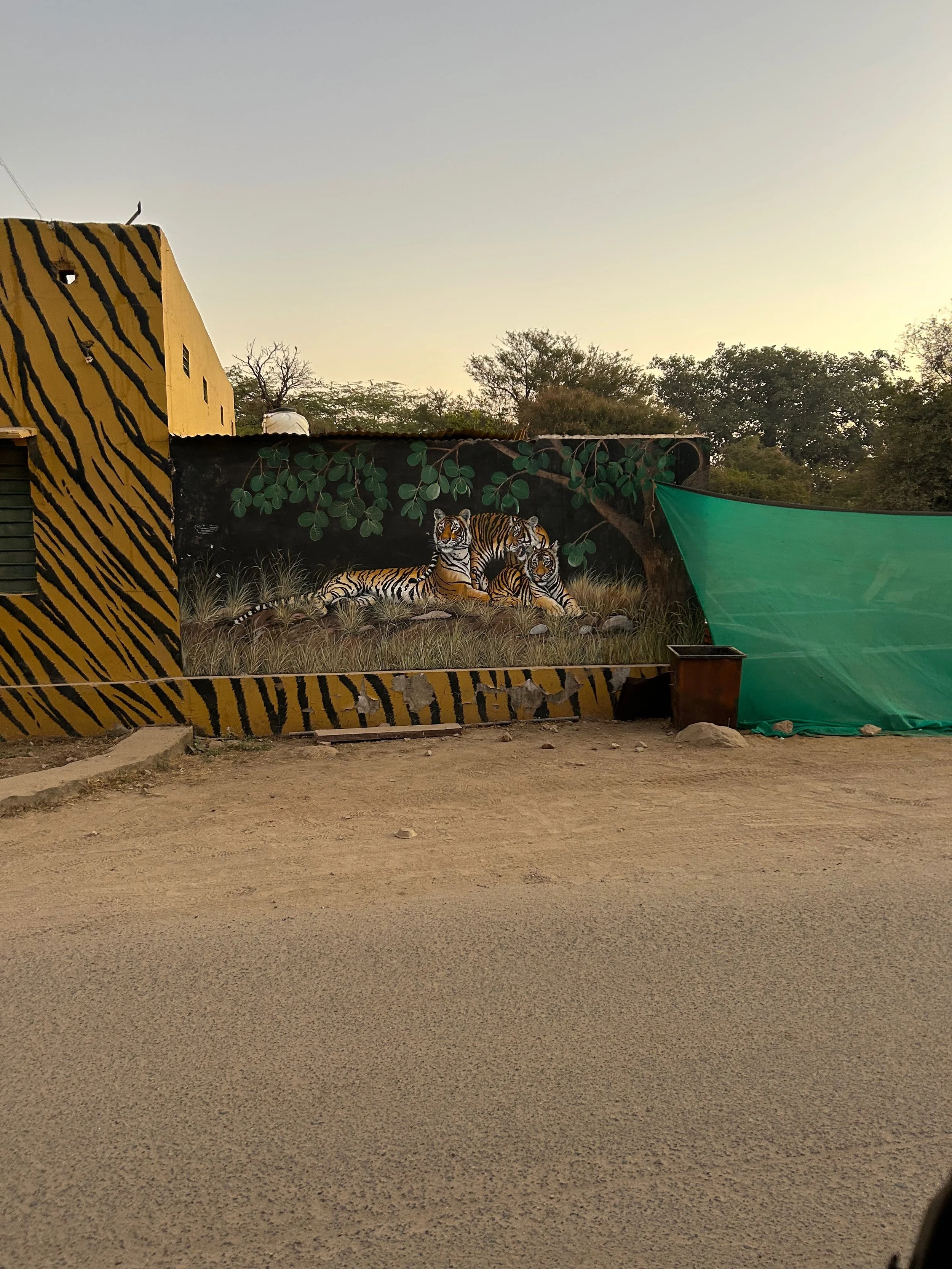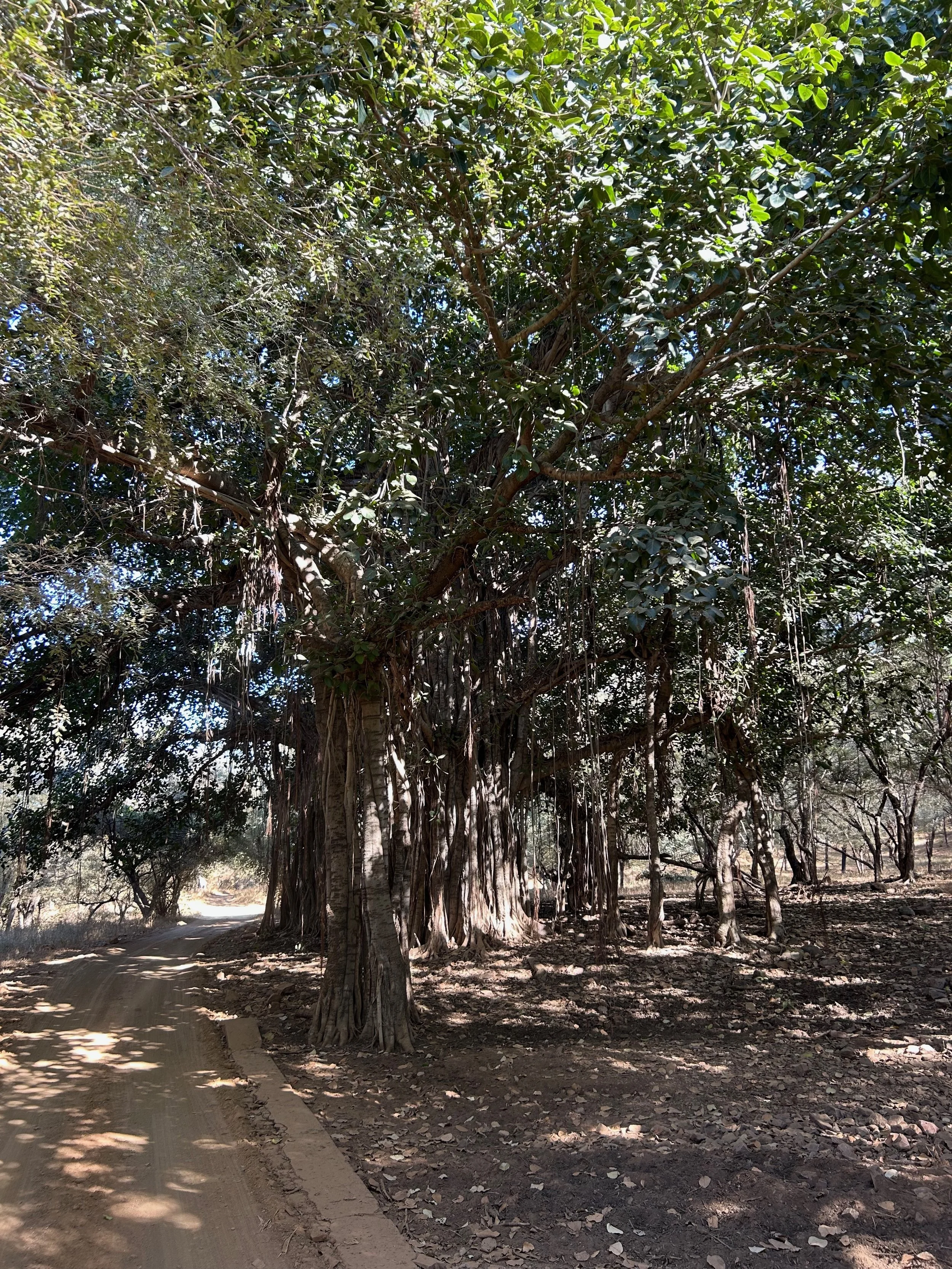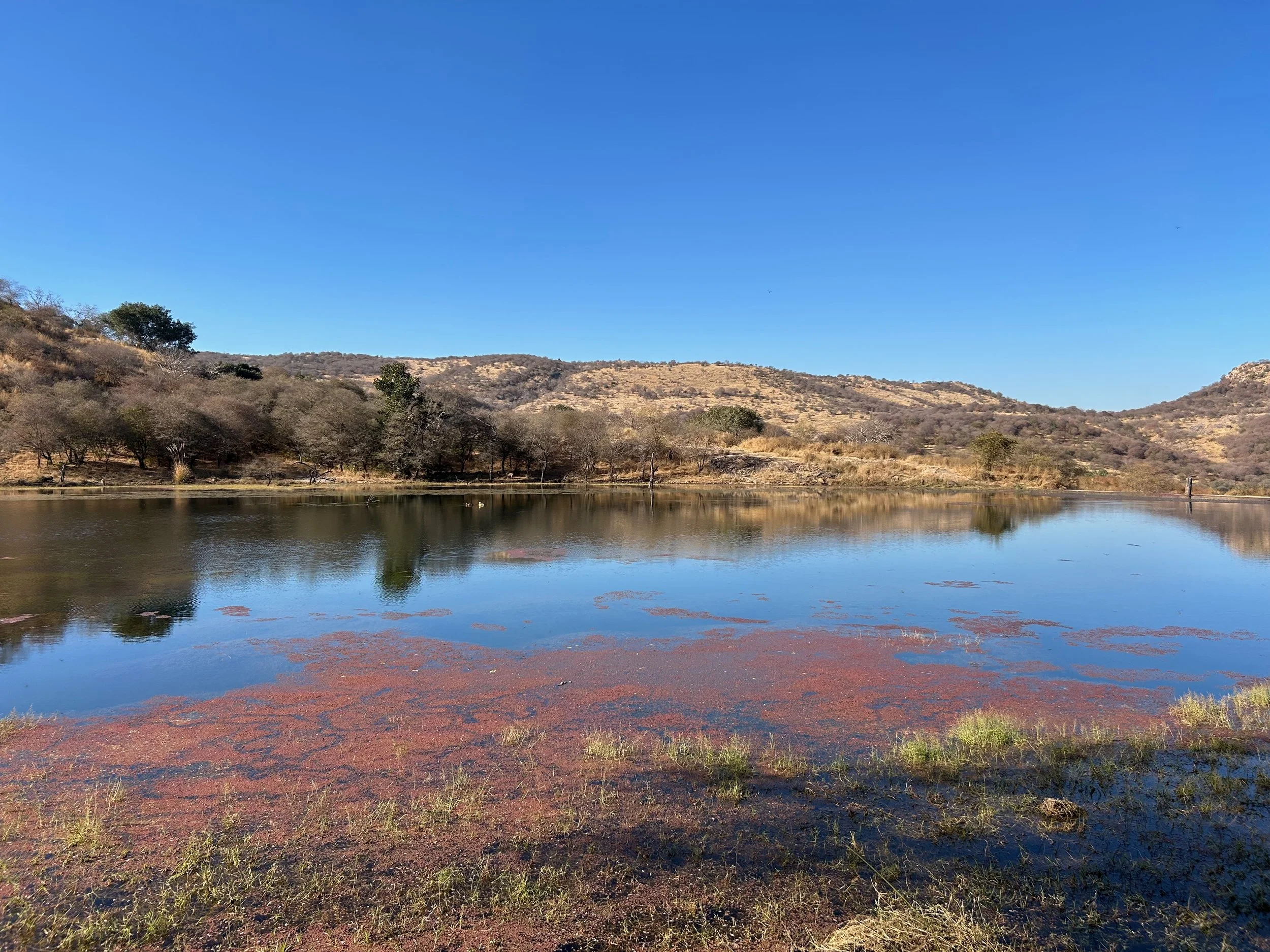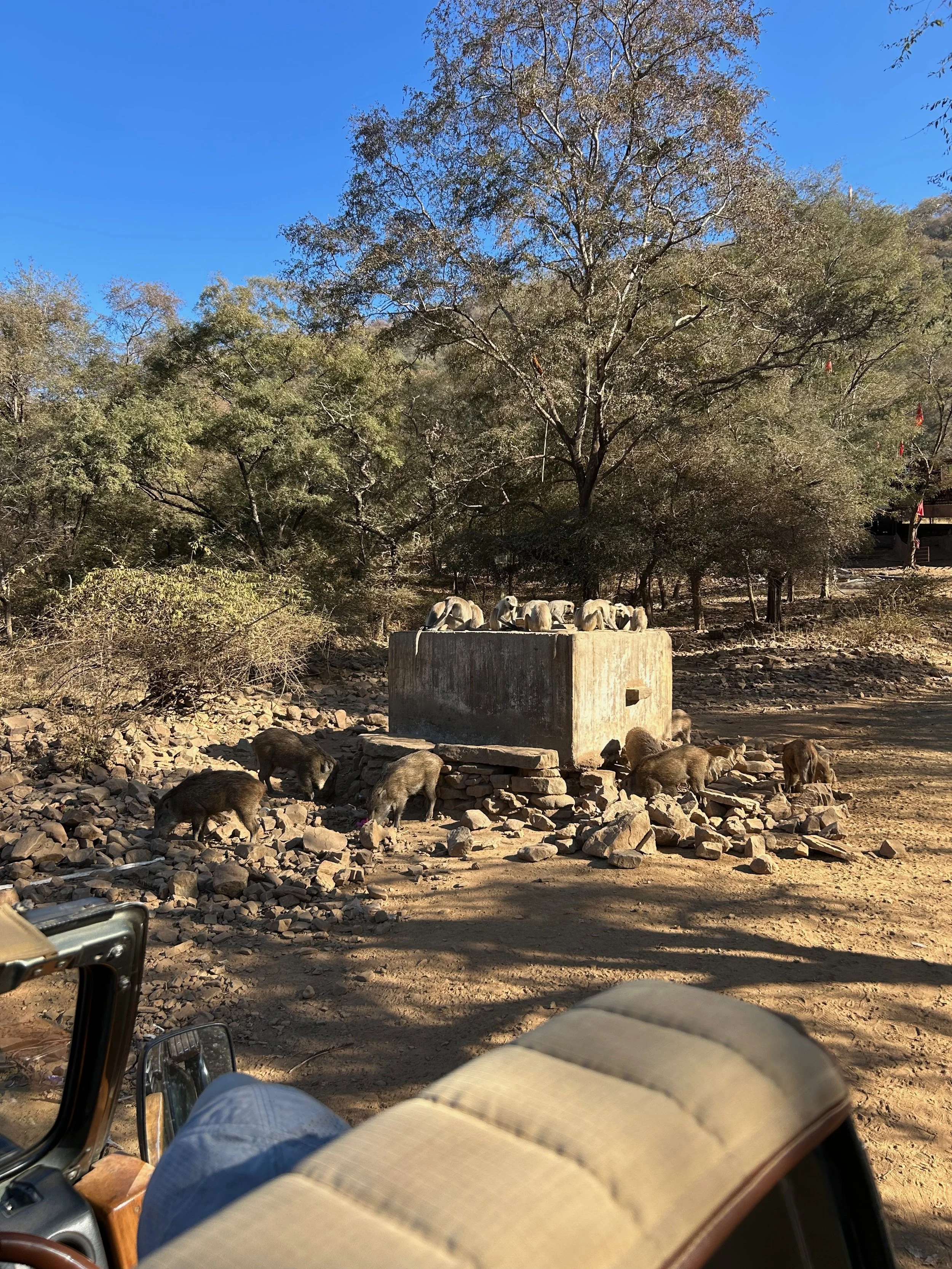Spotting Tigers in Ranthambore: A First-Time Safari at The Oberoi Vanyavilas
Our alarms went off and we woke up, disoriented, to pitch blackness. Bleary-eyed, we dressed in the warmest clothes we had brought and made our way from our tent—which more closely resembled a hotel suite—to the dining room. We were staying at The Oberoi Vanyavilas in Ranthambore, and we had come for one purpose: to see tigers.
Our luxury glamping tent at The Oberoi Vanyavilas
Last year, I worked with Travel Scope, a Destination Management Company, to plan our trip to India. When emailing with our travel consultant and discussing cities to visit, we knew from the start that we wanted to include Ranthambore and experience a tiger safari. Travel Scope worked with Vanyavilas to put together a seamless safari experience for us. People travel from all over to visit Ranthambore in hopes of seeing tigers in the wild—but not everyone is lucky. My parents had traveled to Ranthambore two years earlier and had seen one tiger, so we were keeping our fingers crossed.
We stopped in the dining room to load up on masala chai, warm bread, and muffins, then headed to our assigned Jeep, where we met our guide and driver for the day. Along with our Travel Scope tour guide, Deependra, we climbed into the Jeep and were immediately surrounded by hot water bottles and blankets. While India in December is still quite mild, the early morning hours were cold, and we were warned to dress warmly, as we’d be sitting in an open-top Jeep. We sped off down what seemed like the only main road in town. It was still early enough that the only other vehicles on the road were other safari Jeeps heading toward Ranthambore National Park.
Entrance to Ranthambore National Park
As the sun began to rise, we entered the park and made our way to our assigned zone for the morning drive. Only a limited number of vehicles are allowed to enter the park each day, and each is assigned a specific zone. Reports vary, but our guide estimated that about 70 tigers live in the park. If you're lucky, a few of those tigers will be hanging out in your zone—hopefully in plain sight.
As we drove on and off trails, up and down hills at what felt like top speed, we kept our eyes peeled for a flash of orange or any movement in the trees. Our driver would occasionally stop so our guide could listen for sounds or check tracks on the ground. Suddenly, we heard excited voices over the radio, and we veered off in a new direction.
We arrived at a long path where a few cars had already gathered. Our driver skillfully maneuvered our Jeep into the middle of the group, and our guide gave us specific instructions on where to look. We squinted into the trees and, after our eyes adjusted, we saw it—a tiger napping beside its recent kill. Even asleep, she was absolutely majestic. Camouflaged so well in the trees and brush, once you caught a glimpse of orange, it was hard to look away. She was completely unbothered by the excited chatter and camera clicks, luxuriously sprawled out and fully relaxed. We lingered a few more minutes to see if she would stir, but when it became clear she was settled in for a long nap, our driver headed off in search of other tigers.
A few minutes later, our guide suddenly told the driver to stop and motioned for everyone to be silent. We waited, sipping our masala chai to stay warm, and then—almost simultaneously—we saw her: another tiger walking through the forest.
Tiger mural outside of Ranthambore National Park
We watched in awe as she came closer and closer. She stalked into a clearing and walked right in front of our Jeep. It was an instant shot of adrenaline. We were thrilled to “see some action,” as our guide put it, but there was also something deeply humbling—and slightly terrifying—about being that close to a full-grown tiger in an uncovered vehicle. I estimated she was about 50 feet away, and the thought crossed my mind that if she decided to charge, there would be nothing stopping her. She moved slowly but powerfully, with the confidence of an apex predator, and eventually disappeared into the trees.
Tiger in Ranthambore National Park
Back at The Oberoi for lunch and a quick refresh, the staff welcomed us with warm drinks and were thrilled to hear of our luck. After a delicious meal and a short nap, we were climbing back into the Jeep. The sun was out for our afternoon drive, and the breeze felt peaceful as we headed back to the park.
We were assigned a different zone for the afternoon, and we were treated to some of the park’s most beautiful scenery—shimmering lakes, rolling hills covered in native flora, and tall banyan trees. With the warmer afternoon temperatures, we were less bundled up and able to chat more easily with our guide. He told us about the history of the tigers in Ranthambore and the local community’s efforts to prevent poaching and protect both the tigers and the forest. We learned that tigers are extremely territorial and, once old enough, will even fight their own mothers and siblings to claim territory. That fact made me even more grateful that the tiger we encountered in the morning wasn’t interested in us at all.
Ranthambore National Park
As we drove, we spotted other animals that call the forest home—elk, wild boar, peacocks, and monkeys. While not as thrilling as seeing a tiger, it was still delightful to witness how these creatures interact in the wild. We drove for what felt like miles in search of that telltale flash of orange, but our afternoon luck didn’t match the morning’s. Still, the drive was peaceful and enjoyable, filled with natural beauty and engaging conversation with our guide and driver.
Wild boar and monkeys in Ranthambore National Park
We returned to Vanyavilas starving and ready for a hearty meal. They say lightning doesn’t strike twice, but we felt like we had hit the jackpot: two tiger sightings on our very first safari. It’s an incredible rush to see these magnificent animals in their natural habitat—to watch them move through the forest, to see one resting beside its fresh kill. And that’s just the tigers. The rest of the park is equally worth seeing—stunning in its own right, and absolutely deserving of the community’s dedicated conservation efforts. If you’re interested in a Safari experience I highly recommend considering a trip to India and to Ranthambore National Park. The local community and companies like Travel Scope and The Oberoi made this such a wonderful experience that we’ll never forget.
Our safari group
